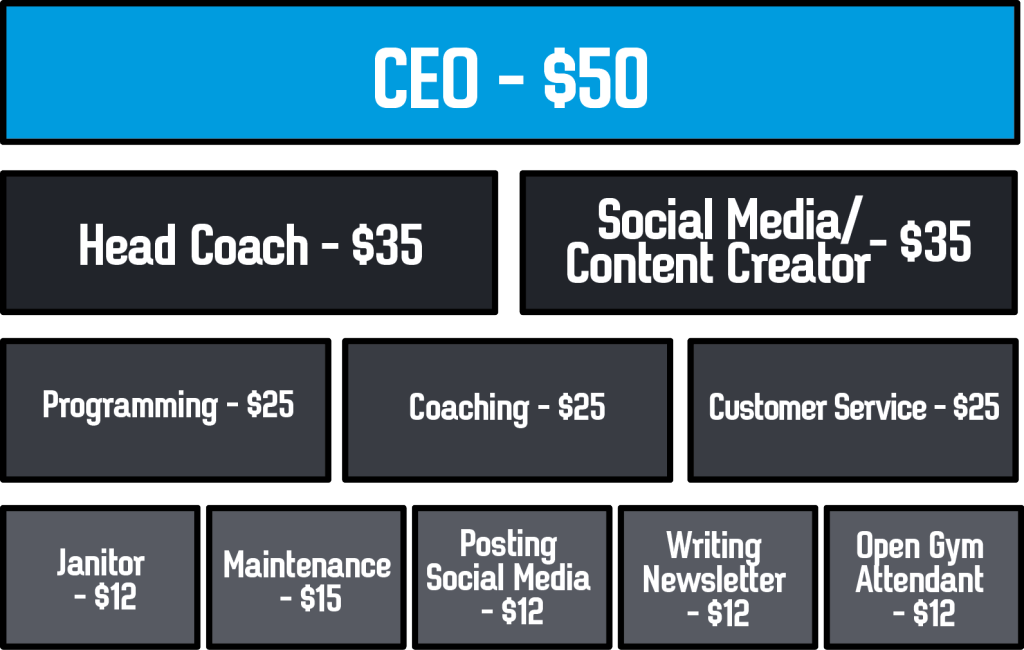[vc_row type=”full_width_background” bg_position=”left top” bg_repeat=”no-repeat” scene_position=”center” text_color=”dark” text_align=”left” top_padding=”40″ bottom_padding=”20″][vc_column width=”1/1″][vc_column_text]
When it comes to business and marketing, there are countless metrics you could track.
For the purpose of this article, we’re going to focus on the crucial basics. Chances are – once you get the hang of these – correlations will begin to emerge. For example: How does event attendance influence Customer Lifespan?
Remember: these are the basics. Yes, there are plenty of other really important Performance Indicators. This is your baseline.
[divider line_type=”No Line” custom_height=”20″]
[divider line_type=”No Line” custom_height=”20″]
1. Profit Margin
What is it?
Your profit margin is what’s left over after every bill, staff member, lease, licensing, etc. are paid. This is how you pay investors, purchase equipment, expand, or buy back your time.
Why it’s important:
Quite simply, this is where you create the life you want. Chances are that you started a business to self-actualize as an entrepreneur. Monthly break-even will not buy you a lifestyle, allow you to scale, or build a better coaching staff. Profits aren’t evil nor should they be avoided. Profits allow you to hire the best staff, send them to whatever certifications they want, and allow you to have some time back.
Mistakes:
The goal of any new business is break-even. That’s the first benchmark you shoot for out of the gate. But most new businesses start there. Early budgets rarely factor in full-staffing or scalability. You must think “profit first” if you ever want to move past hobby and into business. There are lots of businesses out there just breaking even. Consistently breaking even means the majority of the staffing and roles fall on the owner. Next comes burnout…
2. Average Client Revenue
What is it?
Total income divided by every person that uses your space. This includes trade-for-coaching arrangements, free use for Competitive Athletes, swaps for cleaning, discounts, freebies, etc.
Why it’s important:
This gives you a guide for increasing revenues. If you advertise $200/month, but you’re bringing in $160/client something’s broken. Adding more members to a broken revenue system will compound the effect of declining revenues. You’ll never catch up. You need to close the gap between what’s coming in and what’s budgeted before adding members.
Mistakes:
Armed with your profit margin, you’ll be able to clearly see how discounts and trades affect your bottom line. You may realize that you’re swapping $200 in memberships for $100 in cleaning services. This is a hard number to face, but one that business owners must become very comfortable evaluating.
3. Average Client Lifespan
What is it?
The length of time – on average – that a client stays with your business. You factor this by tracking entrance and exit months of all past clients and dividing the total months of engagement by the number of clients entered and exited. New gyms won’t have this data BUT you should begin tracking ASAP.
Why it’s important:
You need to know how long people are sticking around! This will allow you to make long-term budgets and make sound marketing decisions.
Mistakes:
Quite simply – not taking the time to track. This is a really important number to know. Run the report monthly.
4. Total Client Value
What is it?
Average Client Revenue X Average Client Lifespan.
Why it’s important:
This will allow you to budget for retention and marketing with the data necessary to make a sound decision. Don’t forget profit margin here – it’s important. Knowing your profit margin will allow you to further dissect the data to Total Profit Per Client.
Mistakes:
Not using this!!! There is an endless debate over discounts, deal sites, and online “coupons”. The effectiveness of these tools is only conjecture if you don’t use the math. Let’s do an exercise:
Gym XYZ is rocking some very healthy profit margins at 33% (this is a great goal for service-based businesses). Their monthly membership (AND average client revenue) is $200 for unlimited group classes ($66 profit). They know that their members stick around for 11 months with their current structure. They know that each new member will yield a $726 profit over their lifetime, on average. You now have a clear idea on how to budget for new member acquisition.
5. Average Attendance
What is it?
How often do people attend a class with your various packages?
Why it’s important:
This allows you to set your prices, packages, and schedule.
Mistakes:
Again, not looking at this. Most gyms with 2x, 3x, 4x, Unlimited, etc. packages are probably leaving revenues on the table. For example, let’s say you offer a 3x/week option but members on an unlimited option attend 13 classes/month. You’re leaving money on the table by not differentiating the options based on client behavior. I recently asked a gym owner how often athletes use an unlimited membership. The response was: “probably 19-20 times per month.” After running the numbers it was 12. This gym owner was leaving money on the table by having a complex structure based on a “gut” feeling rather than actual member behavior.
6. Cost Per Service Hour
What is it?
Fixed costs + labor/classes on the schedule. Do this for Personal Training and Specialty Class services as well. We’ll differentiate the revenue streams below.
Why it’s important:
Funny enough, I just got off the phone with a personal trainer looking to rent space. I knew the exact dollar figure to quote her. My cost + my profit margin. This will also allow you to set your schedule intelligently. We’ll get to the other reasons below.
Mistakes
Thinking that just because you’ve already purchased the equipment that you DON’T HAVE COSTS. You absolutely have costs associated with providing a class/personal training hour/specialty. You need to recoup these costs + profit (see: #1). Mistake #2: not factoring in FULLY STAFFED budgets into this number. When the owner of a business is supporting the operations through sweat equity, that business is not profitable. Profitability comes when you fire yourself.
7. Revenue Per Service Hour
What is it?
Average Client Revenue/Average Attendance per month. Here’s where we’ll want to stratify our revenue streams in the calculations. Your unlimited membership options will be a good first crack.
Why it’s important:
Quite simply, this will allow you to set your schedule. Find that classes that are losing you money and take them off the schedule. Or offer personal training. Or put in a barbell club. Something that will not lose you money.
Mistakes:
Not calculating the value of your services and making sound business decisions. Let’s say that 3 people come to your 10:00AM class. Your cost per service hour is $39. Your revenue per client per service hour is $9. You’re losing $12 per hour per day. But, what if those members leave when you cancel 10:00AM? You’ll be more profitable. Use the hour to grow your business. It’ll be a greater use of your time.
8. Retention/New Sign-Up Through Behavior Type
What is it?
Behavior tracking is making business decisions based upon how people interact with your business. Also known as “voting with your wallet.” Identify which inputs yield favorable outcomes.
Why it’s important:
Your gut can be wrong – believe it or not. I recently took a hard look at this and made an entire shift in my revenue model as a result. I found that, if a client receives a 1-on-1 service or participates in a specialty class where the monthly expenditure is over $300 in a given month, their lifespan increased 210%.
Mistakes:
Not trusting the data. My “gut” tells me that people would be resistant to spend $300 in services in a given month. It says that I should reduce rates to make things more affordable. But the data screamed something different. The data screamed that I should increase expenditures from Month 1 to increase lifespan from months 2+.
9. BONUS METRIC: Your hourly rate.
I think you should make at least 6 figures. You’re changing peoples lives, improving your country’s health metrics, and positively impacting your community. I want you to have the freedom to do so well into the future and with a greater footprint.
So, what does a $100,000 salary look like hourly? Let’s say $50. How do you achieve this? By firing yourself from every role that’s below your hourly rate. The goal is to move beyond money saving and into revenue creation. This comes through a CEO working at their rate and off-loading anything below.
Below you’ll find an example of how to begin to “fire” yourself from other roles. Again – don’t get hung up on the numbers. Understand the principles of working in high-value positions.

Should you go into debt to justify your hourly? Of course not. BUT, the point is to recognize those first opportunities to fire yourself after reaching profitability. CEO’s exist to scale, connect, and broaden the footprint of the business. Be the CEO.
Summary:
Business is delicate balance between instinct and metrics; your gut and measurable results. Often times, we get so mired in the day-to-day that it becomes difficult to take an honest, birds-eye-view of performance and behavior. Do you find yourself saying “something’s off but I can’t quite place it”? Or, maybe you’re so incredibly busy that you’ve never given thought to some of these key performance indicators.
This is where the value of a third party mentor can really push a business forward. Someone to look at your numbers objectively and help with making sound decisions. This doesn’t need to be a full-fledged business coach/mentor, but you should – at the very least – always have an extra set of eyeballs on your numbers. It’ll be the best investment you’ve ever made in your business.
[divider line_type=”No Line” custom_height=”20″]
 [divider line_type=”No Line” custom_height=”20″][/vc_column_text][/vc_column][/vc_row]
[divider line_type=”No Line” custom_height=”20″][/vc_column_text][/vc_column][/vc_row]